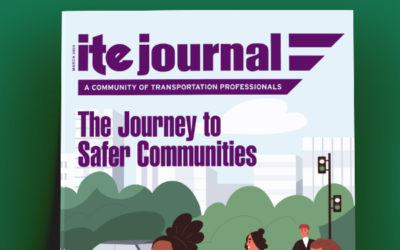
Big Data allows experts to look beyond traditional crash data. Traditional methods are useful in identifying high crash frequency locations; however, the downside is that they are reactive meaning a crash must occur for the data to be collected. Instead, Big Data is allowing practitioners to study a larger number of potential traffic incidents and trouble spots by evaluating specific contributing factors (i.e., driver behavior) to find out what might cause accidents before they happen. As technology improves and the industry shifts towards the use of even more advanced tools like real-time sensors and automated data collection systems, (i.e., Smart Cities), agencies will be able to proactively explore options for using Big Data as they upgrade and expand their existing systems.
To learn more about applying the right data sets to your safety projects, access the brief here. Be sure to tune in to the upcoming ITE webinar featuring ITE Brief co-author, Diwu Zhou, on May 23, 2023.
Contributors

Diwu Zhou
Senior Transportation Engineer
PE, RSP1

Meghan Mitman
RSP2I
Explore More
Pedestrian Paradise, Or Is It?
Do California’s most walkable cities truly correlate with being less dependent on driving for transportation? Learn more.
Transit’s New Normal Needs New Tools
Explore pandemic effects on transit ridership, emphasizing hybrid schedules and hesitancy as crucial factors to consider.
ITE Journal
Explore key findings in safety from the TRB Safe System roundtable, featuring one of our national safety experts, Meghan Mitman.




